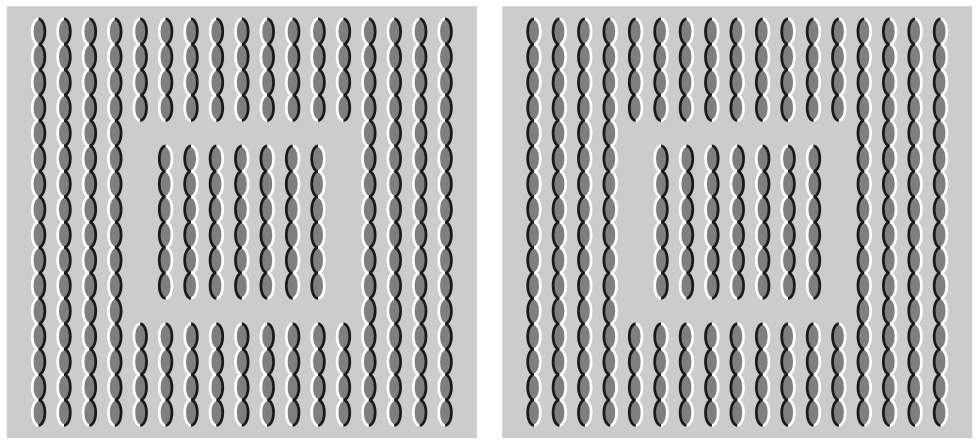
Does the peripheral drift illusion generate illusory motion in depth?
Akiyoshi Kitaoka
Department of Psychology, Ritsumeikan University, Kyoto 603-8577, Japan
E-mail: akitaoka@lt.ritsumei.ac.jp
Hiroshi Ashida
Graduate School of Letters, Kyoto University, Kyoto 606-8501, Japan
E-mail: ashida@bun.kyoto-u.ac.jp
Ikuya Murakami
Human and Information Science Laboratory
NTT Communication Science Laboratories
Atsugi, Kanagawa 243-0198, Japan
Email: ikuya@apollo3.brl.ntt.co.jp
Published in the 71th joint meeting of the 3D Forum with the Japanese Psychonomic
Society, called "Forum of 3D images"
Nagoya Campus Center Building, Chukyo University, Nagoya, Japan, March
12, 2005

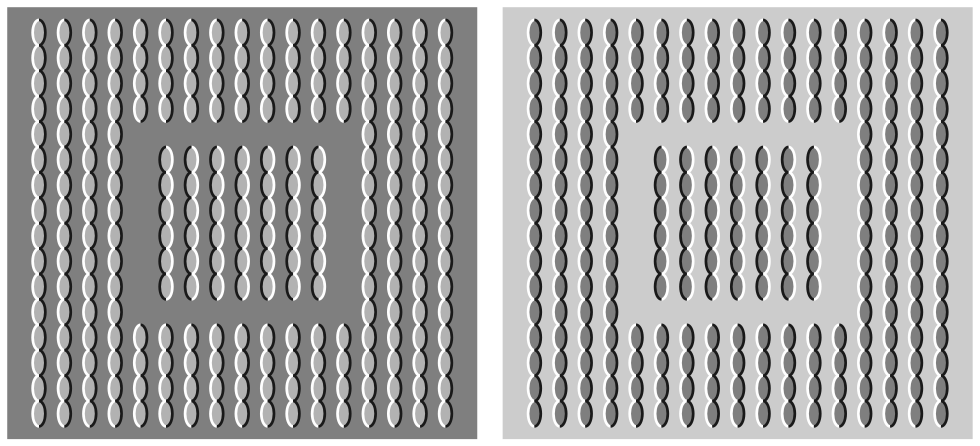
See text
Assumed domains
1. Perception of the apparent position of an edge in the stationary domain (PST)
2. Perception of the apparent position of an edge in the dynamic domain (PDY)
3. Perceptual selection of edges for stereo matching (STR)
4. Peripheral drift illusion (PDI)
Related demo
Movie 1

When the luminance in the background decreases, the rectangles in the middle row appear to shift outward. On the other hand, when the luminance in the background increases, the rectangles appear to move inward.
Results
1. PST disagrees with PDY, where the directions are opposite to each other.
2. PST may agree with STR.
3. PST disagrees with PDI, where the direcions are opposite to each other.
4. PDY disagrees with STR, where apparent depth appears to be constant.
5. PDY may agree with PDI.
6. STR disagrees with PDI, where the direcions are opposite to each other.
These results are consistent with Gregory and Heard (1983).
Gregory R L, Heard P, 1983 "Visual dissociations of movement, position, and stereo depth: Some phenomenal phenomena" Quarterly Journal of Experimental Psychology 35A 217-237
Attention: In this demo, each of the rectangles in the middle row is 1-pixel thicker than each of the others because of a problem when converted from the drawing software. Accordingly, the inner flanks of them are 1-pixel thinner than the others.
The elements of Movie 1
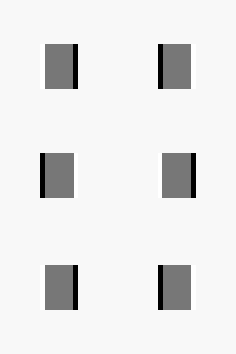
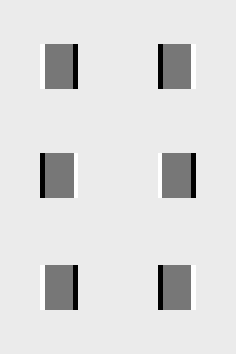
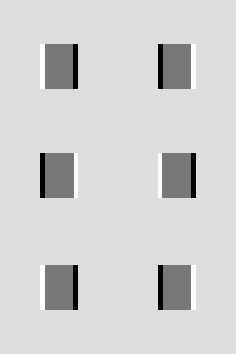
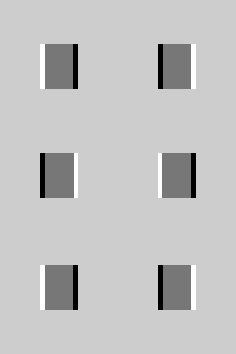
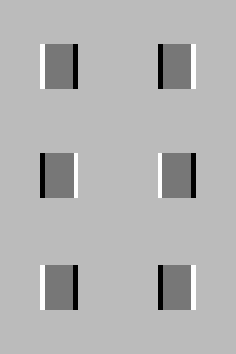
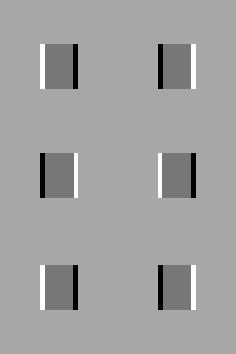
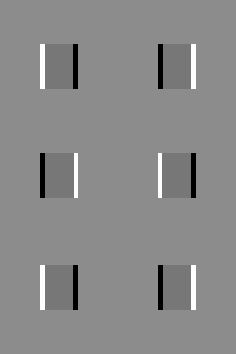
In stationary images, the positional shift is the reversal of the dynamic one. For example, the luminance in the background is lighter, the central rectangles appear to shift outward more largely.
Attention: In this demo, each of the rectangles in the middle row is 1-pixel thicker than each of the others because of a problem when converted from the drawing software. Accordingly, the inner flanks of them are 1-pixel thinner than the others.
Movie 2
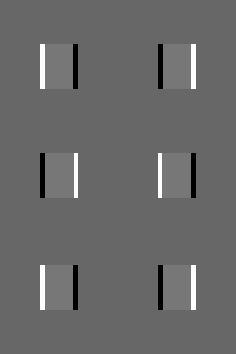
When the luminance in the background decreases, the central rectangles appear to shift outward. On the other hand, when the luminance in the background increases, the central rectangles appear to move inward.
Results
1. PST disagrees with PDY, where the directions are opposite to each other.
2. PST may agree with STR.
3. PST disagrees with PDI, where the direcions are opposite to each other.
4. PDY disagrees with STR, where apparent depth appears to be constant.
5. PDY may agree with PDI.
6. STR disagrees with PDI, where the direcions are opposite to each other.
Attention: In this demo, each of the rectangles in the middle row is 1-pixel thicker than each of the others because of a problem when converted from the drawing software. Accordingly, the inner flanks of them are 1-pixel thinner than the others.
The elements of Movie 2
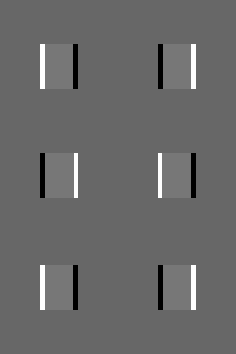
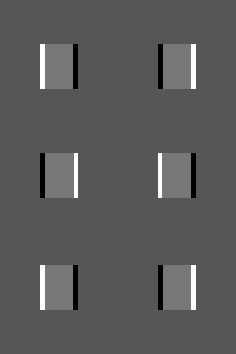
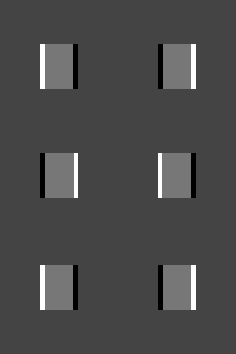
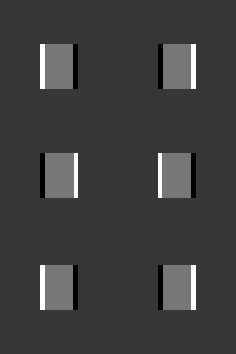
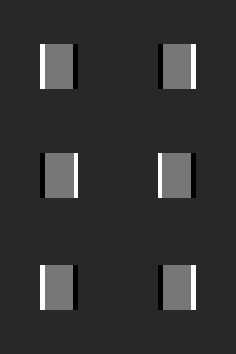
In stationary images, the positional shift is the reversal of the dynamic one. For example, the luminance in the background is darker, the central rectangles appear to shift inward more largely.
Attention: In this demo, each of the rectangles in the middle row is 1-pixel thicker than each of the others because of a problem when converted from the drawing software. Accordingly, the inner flanks of them are 1-pixel thinner than the others.
Movie 3 (Movie 1 + 2)
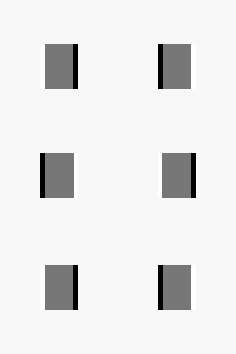
When the luminance in the background increases, the central rectangles appear to be moving inward. On the other hand, when the luminance in the background decreases, the central rectangles appear to be moving outward. The "stationary" positional shift, however, appears to occur suddenly at the change in contrast polarity between the rectangles and the background. It takes effort or special attention to confirm this observation.
Results
1. PST disagrees with PDY, where the directions are opposite to each other.
2. PST may agree with STR.
3. PST disagrees with PDI, where the direcions are opposite to each other.
4. PDY disagrees with STR, where the direcions are opposite to each other.
5. PDY may agree with PDI.
6. STR disagrees with PDI, where the direcions are opposite to each other.
Attention: In this demo, each of the rectangles in the middle row is 1-pixel thicker than each of the others because of a problem when converted from the drawing software. Accordingly, the inner flanks of them are 1-pixel thinner than the others.
Movie 4
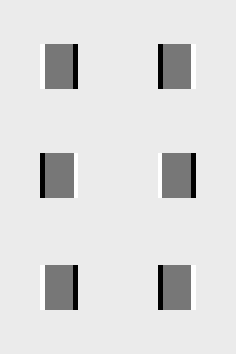
The sudden, "stationary" positional shift that is discernible without attention can be seen more easily in this movie.
There appears another illusory motion just after the change in the luminance of the background. For example, when it is flipped to be dark, the central rectangles appear to move outward. I imagine this is the peripheral drift illusion.
Attention: In this demo, each of the rectangles in the middle row is 1-pixel thicker than each of the others because of a problem when converted from the drawing software. Accordingly, the inner flanks of them are 1-pixel thinner than the others.
Movie 5
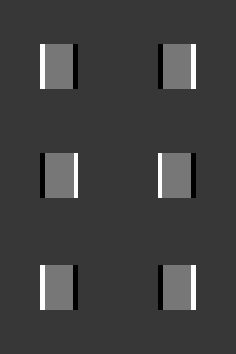
One way
Attention: In this demo, each of the rectangles in the middle row is 1-pixel thicker than each of the others because of a problem when converted from the drawing software. Accordingly, the inner flanks of them are 1-pixel thinner than the others.
An image to examine which edges should be matched binocularly
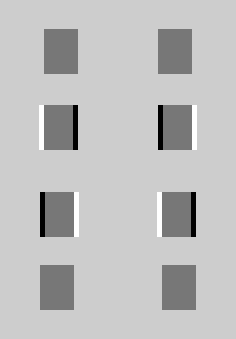
In the first author's opinion, when cross-fused, the third pair (giving a transparent dark rectangle) appears to be nearer than the fourth (bottom) pair. Moreover, the second pair (giving an opaque gray rectangle) appears to be nearer than the top pair. Is this "depth contrast"?
Attention: In this demo, the gray rectangles in the second row are each placed 1-pixel eccentric than those in the third row. It is OK to compare the first row with the second one, or the third row with the fourth one.
Movie 6
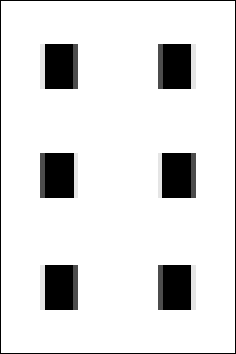
In this case, the apparent dynamic positions of edges, their apparent stationary positions, and depth perception are consistent. This configuration also agrees with the directon of the peripheral drift illusion.
Results
1. PST agrees with PDY.
2. PST agrees with STR.
3. PST agrees with PDI.
4. PDY agrees with STR.
5. PDY agrees with PDI.
6. STR agrees with PDI.
These results are probably consistent with Anstis (?) (and Rogers (?)).
Attention: In this demo, each of the rectangles in the middle row is 1-pixel thicker than each of the others because of a problem when converted from the drawing software. Accordingly, the inner flanks of them are 1-pixel thinner than the others.
The elements of Movie 6
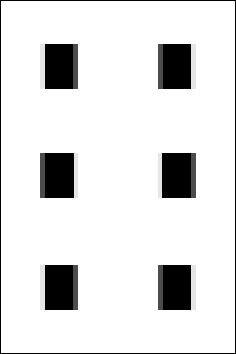
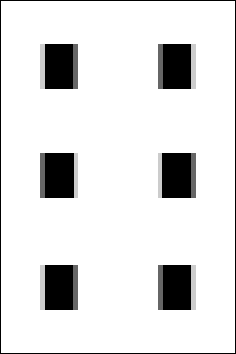
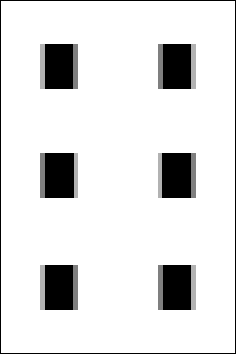
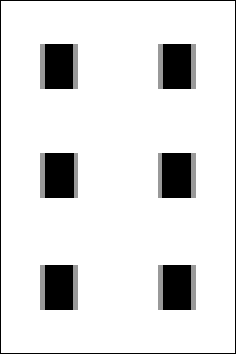
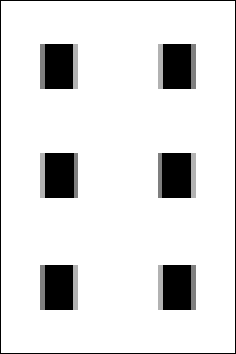
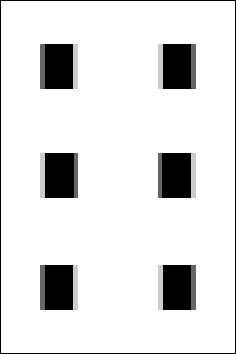
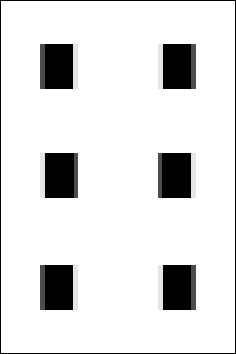
Attention: In this demo, each of the rectangles in the middle row is 1-pixel thicker than each of the others because of a problem when converted from the drawing software. Accordingly, the inner flanks of them are 1-pixel thinner than the others.
Additional discussion
The peripheral drift illusion is not observed in the centeral vision while the positional shift in this dynamic condition can be seen in the central vision. This suggests that these two phenomena be different from each other.
Our speculation
There are at least four mechanisms in these stimuli, independent of each other.
1. Perception of the apparent position of an edge in the stationary domain
2. Perception of the apparent position of an edge in the dynamic domain
3. Perceptual selection of edges for stereo matching
4. Peripheral drift illusion